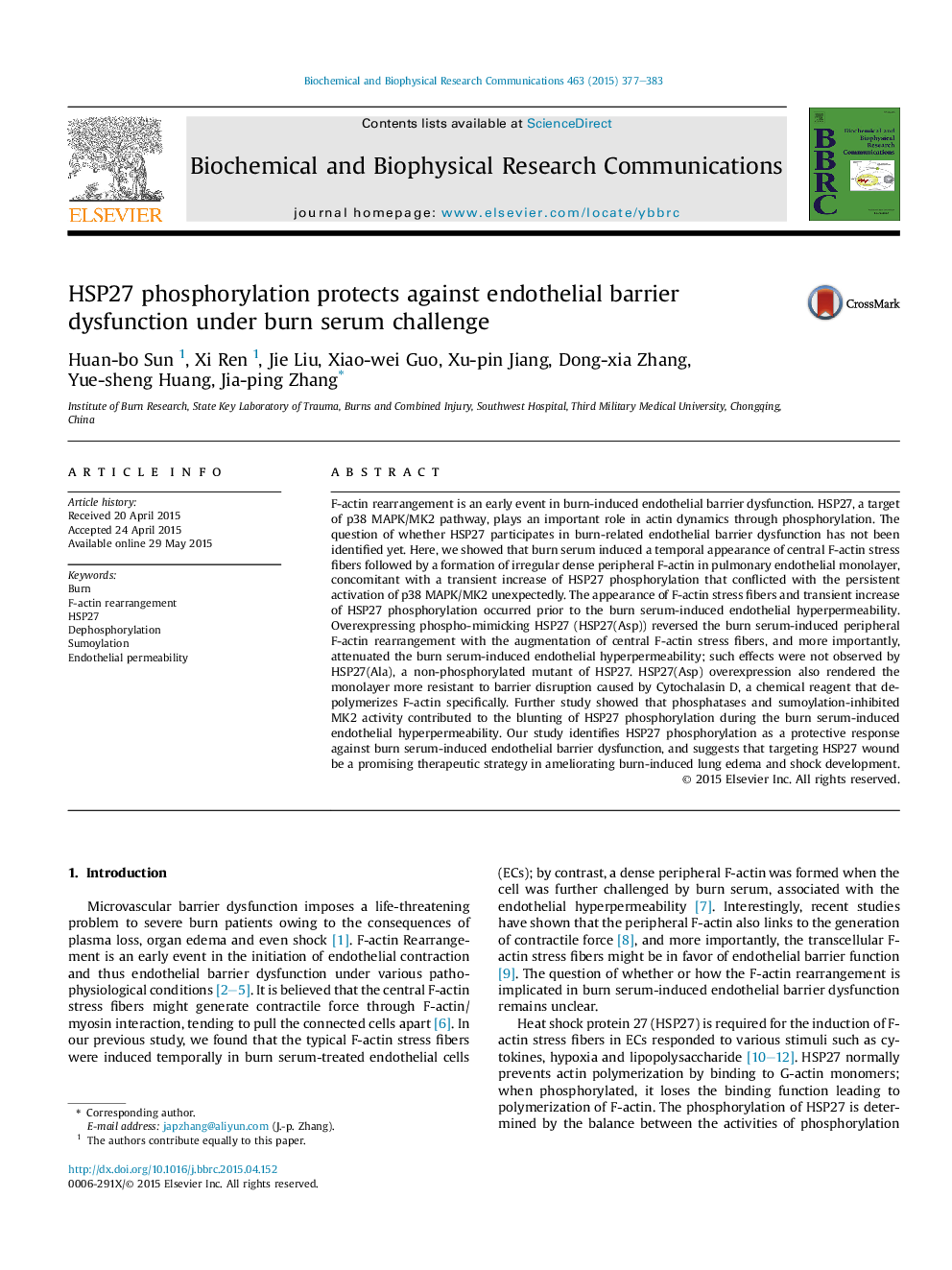| Article ID | Journal | Published Year | Pages | File Type |
|---|---|---|---|---|
| 10751075 | Biochemical and Biophysical Research Communications | 2015 | 7 Pages |
Abstract
F-actin rearrangement is an early event in burn-induced endothelial barrier dysfunction. HSP27, a target of p38 MAPK/MK2 pathway, plays an important role in actin dynamics through phosphorylation. The question of whether HSP27 participates in burn-related endothelial barrier dysfunction has not been identified yet. Here, we showed that burn serum induced a temporal appearance of central F-actin stress fibers followed by a formation of irregular dense peripheral F-actin in pulmonary endothelial monolayer, concomitant with a transient increase of HSP27 phosphorylation that conflicted with the persistent activation of p38 MAPK/MK2 unexpectedly. The appearance of F-actin stress fibers and transient increase of HSP27 phosphorylation occurred prior to the burn serum-induced endothelial hyperpermeability. Overexpressing phospho-mimicking HSP27 (HSP27(Asp)) reversed the burn serum-induced peripheral F-actin rearrangement with the augmentation of central F-actin stress fibers, and more importantly, attenuated the burn serum-induced endothelial hyperpermeability; such effects were not observed by HSP27(Ala), a non-phosphorylated mutant of HSP27. HSP27(Asp) overexpression also rendered the monolayer more resistant to barrier disruption caused by Cytochalasin D, a chemical reagent that depolymerizes F-actin specifically. Further study showed that phosphatases and sumoylation-inhibited MK2 activity contributed to the blunting of HSP27 phosphorylation during the burn serum-induced endothelial hyperpermeability. Our study identifies HSP27 phosphorylation as a protective response against burn serum-induced endothelial barrier dysfunction, and suggests that targeting HSP27 wound be a promising therapeutic strategy in ameliorating burn-induced lung edema and shock development.
Related Topics
Life Sciences
Biochemistry, Genetics and Molecular Biology
Biochemistry
Authors
Huan-bo Sun, Xi Ren, Jie Liu, Xiao-wei Guo, Xu-pin Jiang, Dong-xia Zhang, Yue-sheng Huang, Jia-ping Zhang,
